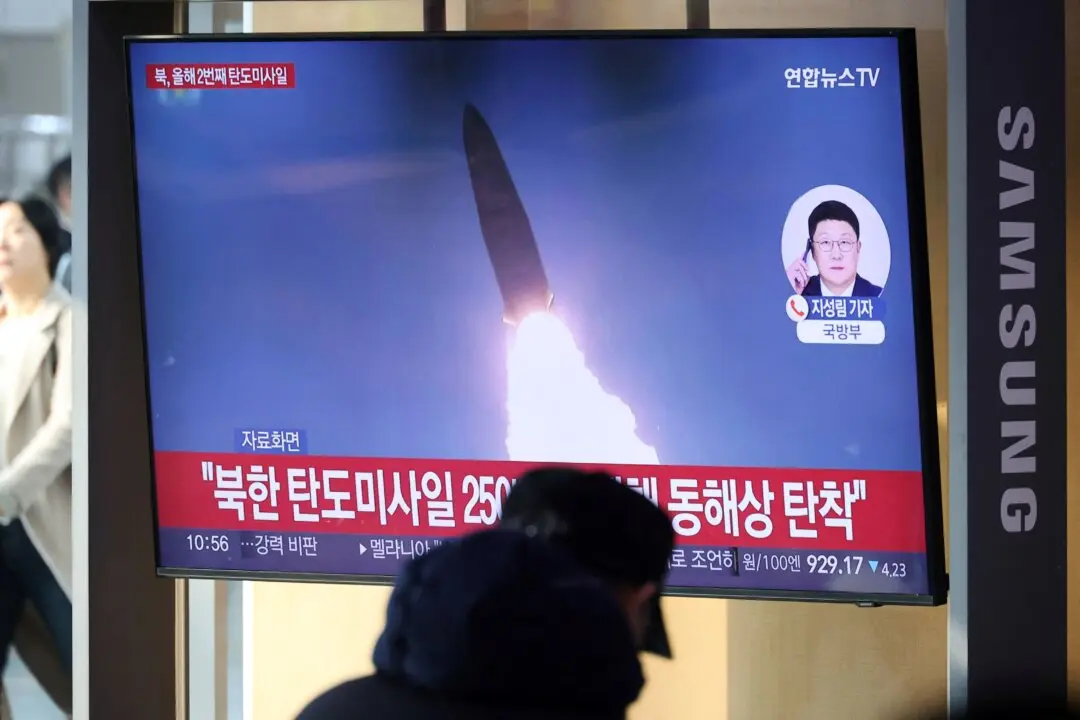MADRID—Spaniards began lining the streets of Madrid on Thursday and national flags hung from balconies across the capital as unionists used a holiday military parade to show unity in the face of moves by Catalonia to declare independence.
The wealthy region’s intention to break away has plunged Spain into its worst political crisis since an attempted military coup in 1981, with Madrid threatening to sack the Catalan government if it goes ahead.
On Thursday, a military parade to mark the anniversary of explorer Christopher Columbus’s arrival in the Americas on behalf of the Spanish crown took place in a city already festooned with flags hung by Spaniards in a display of unity.
Tension remains high between the central government and Catalonia after the region’s leader signed a symbolic declaration of independence on Tuesday, citing the results of an Oct. 1 referendum which had been declared illegal by Madrid.
Catalan government chief Carles Puigdemont had stopped short of moving a motion of independence in the regional parliament, disappointing many of his own supporters.
Prime Minister Mariano Rajoy has given Puigdemont eight days to drop his push for independence or face the suspension of its political autonomy.
If Puigdemont does not respond in time or confirms a will to secede, Rajoy can turn to article 155 of the 1978 constitution which allows him to sack the regional government.
“Ask for dialogue and they answer you by putting the 155 on the table. Understood,” Puigdemont tweeted late on Wednesday.
Uncertainty remains over what article 155, which has never been invoked before, would mean in practice.
“I can’t tell you exactly what the measures are,” Foreign Minister Alfonso Dastis told France’s CNews TV channel.
“Article 155 is... quite large. It can be fine-tuned, and that’s certainly what the government will do, acting prudently as it has been,” Dastis said.
Political analysts expect Rajoy’s next step would be to call a snap regional election to plot a path out of the crisis.
King Felipe presided over the Madrid parade, which included almost 4,000 military and police officials. Last week, in a rare intervention, he accused Catalan secessionist leaders of shattering democratic principles and dividing Catalan society.
People were also expected to gather on Thursday at Plaza Catalonia in central Barcelona, the Catalan capital.
Hundreds of thousands have marched though Spain’s main cities in recent weeks during the crisis, which was exacerbated by a police crackdown during the banned vote on Oct. 1.
In Barcelona last weekend, crowds waved Spanish and Catalan flags, describing themselves as the “silent majority” opposed to independence.
Puigdemont said 90 percent of voters in the referendum backed secession, but turn-out was only 43 percent. Polls conducted beforehand had suggested around 40 percent of residents in Catalonia backed independence.
Financial markets watching the situation in the euro zone’s fourth-largest economy breathed a sigh of relief and the euro climbed when Puigdemont signed the symbolic declaration rather than formally announcing a split on Oct. 10.





